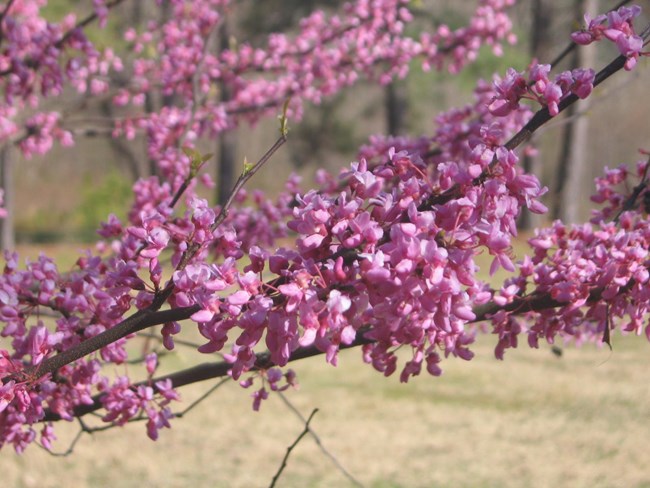
NPS Photo Petersburg National Battlefield consists of a number of different habitat types. These habitats include upland coastal plain, piedmont forest, old field, managed field, marsh, and riverine vegetation. This diversity of habitats allows for a large, varied plant population. To date, 170 species of vascular plants have been documented within the park. Forests make up the largest portion of the park, and play host to a variety of tree species. These forests range from pine to mixed pine/hardwood in composition. In the marshy habitat of the park, many wetland plants have been inventoried. The National Park Service, in cooperation with the Virginia Department of Conservation and Recreation and North Carolina State University, is in the process of creating vegetation maps of the park. Sample plots of areas will be intensively studied to identify vegetation type and the extent of cover for each species within the plots. This data will be correlated with aerial photos, topographic maps, and soil surveys to determine and classify plant communities according to National Vegetation Classification System descriptions. The end product will be a complete map of the vegetation classes for the battlefield. One of Petersburg National Battlefield’s main problems is exotic and invasive plant species. Exotics documented within the park include Mimosa, Tree of Heaven, Japanese Stiltgrass, and Johnson Grass, to name a few. To find out more about the park’s battle against invasive and exotics, why these non-native plants are a problem, and what you can do to stop the spread of these harmful species, look in the Environmental Factors section. |
Last updated: February 26, 2015
